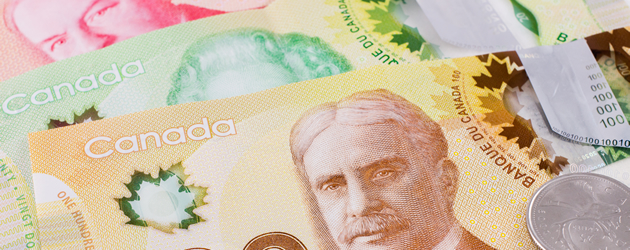
The Canadian Dollar (CAD) initially weakened against the Pound (GBP) and US Dollar (USD) on Wednesday after the latest Retail Sales data out of the nation declined for a second consecutive month. It then proceeded to rally sharply.
According to the Ottawa based Statistics Canada, retails says in the North American nation fell by 0.3% to $42.4 billion in August, worse than economist forecasts for the figure to remain unchanged from the previous month. The data showed that retail sales had fallen in eleven sub-sectors, representing 76% of retail trade.
Sales of petrol dropped by 2.1% in August to the lowest level since the end of 2013 as oil prices declined because of falling commodity prices. Sales at motor vehicle and parts dealers were down 0.4% in August, giving back some of July’s gains.
The overall sub-sector decline was due in large part to weaker sales at new car dealers -0.6% and, to a much lesser extent, automotive parts, accessories and tire stores -0.6%. Higher sales were reported at other motor vehicle dealers +1.8% and used car dealers +0.8%. Sales at food and beverage stores declined 0.4%.
Supermarkets and other grocery stores sales decreased 0.4% in August, while sales at beer, wine and liquor stores were down 0.7%. Lower sales were reported at specialty food stores -0.5% for the fourth consecutive month.
Retail sales were down in six provinces in August, with lower sales in Ontario and, to a lesser extent, Alberta accounting for most of the decrease.
The Canadian Dollar experienced little change because of the Bank of Canada leaving interest rates unchanged at 1%, a decision that was expected by economists. The ‘Loonie’ then rallied broadly after the BoC eliminated any reference to neutrality in its rate statement.
The Pound meanwhile was under pressure and was weaker against most major peers after the minutes of the latest Bank of England policy meeting were more dovish than initially expected.
Policy makers voted in favour of leaving interest rates unchanged at 0.5% and leaving its monthly bond-buying programme unchanged. The minutes showed that policy makers are concerned over the weakness of the Eurozone and the slowdown in the global economy.
‘Momentum within and without the UK economy has slowed; we have seen slowing growth in China, the US, the Eurozone and likely the UK this Friday’ said Jeremy Cook from World First.
The US Dollar meanwhile was trading higher against several major peers after data showed that consumer prices increased by 0.1% last month matching estimates and follows Augusts’ decline of 0.2%. Core consumer prices, which excludes volatile energy costs and food prices, increased by 0.1% less than the 0.2% rise forecast.
A separate report also showed that Mortgage applications in the country rose strongly in the week ending on October 13.
The Pound could regain ground on Thursday if the latest Retail Sales data comes in positively. The US Dollar is also likely to make further gains as economists expect Jobless Claims data to come in positively.
Canadian Dollar (CAD) Exchange Rates
[table width=”100%” colwidth=”50|50|50|50|50″ colalign=”left|left|left|left|left”]
Currency, ,Currency,Rate ,
Canadian Dollar, ,Pound Sterling,0.5561 ,
,Pound Sterling,0.5561 ,
Canadian Dollar, ,US Dollar,0.8914 ,
,US Dollar,0.8914 ,
Canadian Dollar, ,Euro,0.7045 ,
,Euro,0.7045 ,
Canadian Dollar, ,Australian Dollar,1.0152,
,Australian Dollar,1.0152,
Canadian Dollar, ,New Zealand Dollar,1.1153 ,
,New Zealand Dollar,1.1153 ,
US Dollar, ,Canadian Dollar,1.1213 ,
,Canadian Dollar,1.1213 ,
Pound Sterling, ,Canadian Dollar,1.7954 ,
,Canadian Dollar,1.7954 ,
Euro, ,Canadian Dollar,1.4203 ,
,Canadian Dollar,1.4203 ,
Australian Dollar, ,Canadian Dollar,0.9853 ,
,Canadian Dollar,0.9853 ,
New Zealand Dollar, ,Canadian Dollar,0.8945 ,
,Canadian Dollar,0.8945 ,
[/table]

